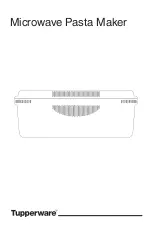
and most aromatic cup of coffee. This is also the reason why
many European restaurants and hotels will serve you freshly
pressured brewed coffee only. Experiment with your new
machine and prepare yourself the best and most enjoyable cup
of coffee!
4.1 PRESSURE BREWING
You can make any quantity of coffee from
1
⁄
2
oz. to 16 oz. Please
note: in order to create the "crema" on top of your coffee, the
machine brews coffee at slightly lower temperatures than a drip
coffee maker. Since your coffee is delivered directly into your
cup we recommend to enjoy it immediately.
4.2 DIFFERENT COFFEE DRINKS
Here are some guidelines for the most popular coffee drinks:
•
Ristretto:
1
⁄
2
to I oz. of coffee.
•
Espresso:
1 to 2 oz. coffee.
•
Double Shot:
3 to 4 oz. of coffee.
Definitely add a bit of sugar to the above drinks.
•
Crema Coffee:
5 oz. to 7
1
⁄
2
oz. of coffee
•
Cappuccino:
Espresso plus 3 to 4 oz. of hot frothed milk.
•
Latte:
Espresso plus 3 to 5 oz. of steamed milk with little or
no froth.
•
Café Mocha:
add chocolate syrup to the milk before
frothing/steaming.
Experiment with the size of your milk based drinks. For stronger
coffee taste add more coffee, for more milk taste use more
frothed milk.
4.3 COFFEE FACTS
•
Caffeine
is tasteless. A "strong" coffee or espresso is mostly
the result of the amount of coffee in relation to the amount of
water. The longer a bean is roasted, the less caffeine it has.
•
Arabica and Robusta
are two genetically different kinds of
beans. "Arabica" beans have more flavor and a little less caffeine
than "Robusta" beans which are mostly used in lower priced
coffees and instant coffees.
• Espresso
is not a bean, it's the way the coffee is roasted and
prepared. Typical US espresso roasts result in darker beans with
an oily outside. European espresso roasts are medium brown
with no or very little oils showing on the outside. Please note: If
you use dark, oily beans, see chapter 8 for special handling.
5. PLEASE, DON’T... (or you void your warranty protection):
• Never fill instant coffee into the grinder or ground coffee funnel
it can damage the functioning of the brewing chamber.
• Never fill sugar coated coffee beans into the bean container.
• Never fill frozen beans into the bean container. If you store
beans in the freezer, let them thaw for 3 to 4 hours before
filling them into the bean container.
• Never fill anything other than coffee beans into the bean con-
tainer (no chocolate, rice, nuts, spices, etc.
• Never fill anything but fresh, cold clean water into the water
container, except when decalcifying (chapter 17.2).
• Never use mineral or carbonated water. You can use tap
water, spring water, distilled water and reverse osmosis water.
• Never repair or open the machine yourself. All repairs should
be performed only by an authorized service center.
10.











































